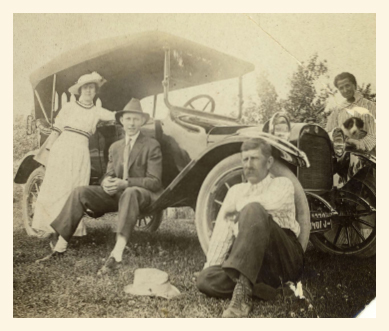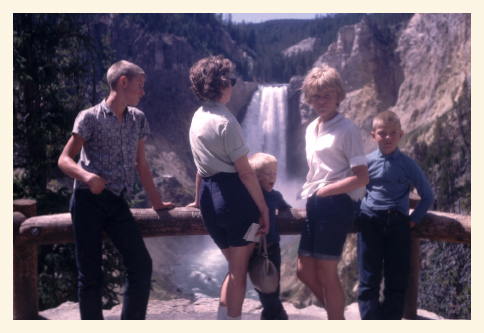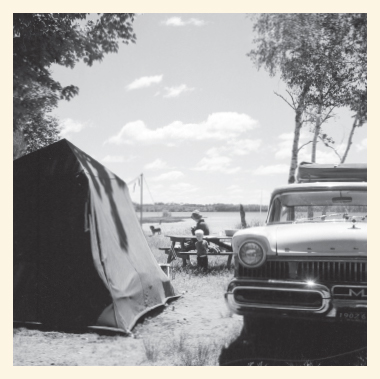By Eric Peterschmidt
Family photos. If you are like almost everyone, you have them! Great! And, like most people, when asked where a particular photo is, you may not really know. You have probably felt the pain too when trying to find that photo. It can be immensely frustrating!
The issue of “Where are my photos?” is related to the issue of “I would love to digitize my photos, but where do I start?”.
When it comes to most anything, you cannot control what you don’t know. The situation with your photos is no different. To be able to answer the question of “Where do I start?”, you need to know what you have. That starts with a very simple assessment. Not a detailed inventory, but a simple one that answers questions like, “Where is the box and, generally speaking, what’s in it?” Of course, things are not just in boxes. They are also contained in photo albums, frames, on hard drives and even the cloud. That is fine – they are still “containers.” The “containers” have other things in them besides photos too. For example, videos, documents, letters, newspapers, genealogy records, audio files, etc. That is fine as well. By listing what you have and where it is at, you can start to get your arms around your amazing family asset, so that you can control it.
Once you control it, then you can decide on the next steps. For example, what to digitize first? In other words, where do I start? The opportunity with digitization is that, it can be the start of transforming your boxes into a living legacy. Digitization alone does not do that. However, it is what you can do once digitized that the real value emerges.
The objective of this discussion is to provide you with a plan to get you through the digitizing of your wonderful photos to the point of their transformation to a living legacy.
The following are the four steps I currently follow. My process has evolved over the last couple decades based on my own learnings as well as the learnings from others in the industry. If you only have one or two boxes, and you know what is in them, then you may have step one covered. However, if you, like me, have many more, then I hope this can be of value.
1. Assess. Locate where your photos are and build a general inventory.
a. Use paper or any computing device to record the inventory (e.g. word processor).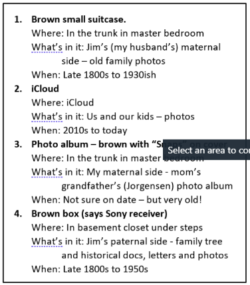
b. What “containers” are the photos in? Since photos may be paper or digital, they are likely all over the place. A container could be a box, a hard drive, smartphone, SD card, USB drive, cloud storage, photo book or even picture frame. Where are those “containers” located (in which room, closet or perhaps someone else’s home)?
c. What’s in each box? What is the subject matter? Which family? When? This is where you can easily be drawn down a rabbit hole. While it is fine and often incredibly rewarding to do that, I suggest you resist the urge to go deep until you have your general inventory done. No detail needed yet. Just enough to answer the question “What is in that box?”. That means, identify the family branch the photos and other artifacts are associated with, and note a general timeframe. The following “Tips” address this.
If you are fortunate enough to have a pretty traditional family, break things down into five family groupings. If your family is a little more complicated, you may have a few more groupings.
TIP 1: Attribute to a part of the family. Five groups overall. Think of the life you and your spouse have had together as one group. Then, create four additional groupings by breaking things into the parental blood lines of you and your spouse. Therefore, your mom, your dad, your spouse’s mom and your spouse’s dad. That will give you a quick idea of what side of the family.
-
-
- Example 1: “iCloud has all of the photos we took of each other and the kids over the last five years.” Therefore, that group would be attributed to you and your spouse.
- Example 2: “That photo album is of my husband’s father’s father’s family.” That would be attributed to your husband’s paternal line.
-
Tip 2: Give it an approximate time period. For example, early 1900s, or 1950s – 70s. That, when combined with the bloodline, will give you a nice snapshot of what is in the container.
d. Clearly number the box and use that number in your inventory.
e. When done, this will be your “current state” and will serve as a record of the starting point. Later, when you start doing “deep dives,” update this inventory to reflect that. Use it as a living inventory as it will only become more valuable with time.
2. Prioritize. Now that you have a general inventory, which box do you tackle first? It will be different for everyone. If your goal is to be able to ultimately get input from others to learn about and document your photos, here are some considerations to help you decide.
a. Older versus newer photos. With the older photos, memories are faded and at risk of being lost, but when re-discovered can be joyful.
b. Do you have aging elders? You may want to focus on items that a particular elder of yours would know about, while he/she is still around and able to participate. Elders often find this activity very enjoyable, and the photos often trigger wonderful memories that can be captured and preserved.
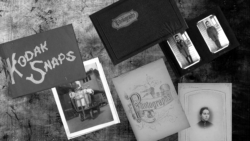 c. Focus on those photos that have greater significance from a family standpoint. They may be old, but photos of a landscape may not be as important as photos of your great grandparents or of your family’s farm during the Great Depression.
c. Focus on those photos that have greater significance from a family standpoint. They may be old, but photos of a landscape may not be as important as photos of your great grandparents or of your family’s farm during the Great Depression.
d. Are the photos at risk of being damaged (e.g. mold or mildew) or lost due to unstable media like VHS tapes or on memory cards that are not backed up? You may want to at least do some things to protect these, stabilizing them to be prioritized later.
e. Don’t’ forget fun! Consider items that you and other family members will enjoy diving into.
3. Digitalization. Moving the images from the physical world to digital sets them up to be preserved and shared – ready for the transformation.
a. “Digitization” means, converting it into a format that can be viewed on a computer, tablet (e.g. iPad) or smartphone. It is no longer necessary to make duplicate paper prints. There has never been an easier way to share photographs with family.
b. Digitization, such as scanning, takes time. However, amazing options are available today to fit almost every budget – from DIY to hire it out with lots in between. Do you have time? Do you have the technical know-how? Do you have some dispensable funds to pay someone? Do you have kids or grandkids that can do it? These are a few of the things to consider when choosing an approach that works for you. Look for a future post for more information.
c. Digitization works hand in glove with Step 4. Digitization is the enabler that allows the family to start learning about what you have and about their family’s history.
TIP 3: You don’t have to wait to finish digitizing before you move on. Think of this as an iterative process – “filling a pipeline.” As photos are digitized in the priority you have chosen, you can then move them in batches to Step 4. Those you share them with will appreciate seeing photos and stories emerge in batches as well, as they are more easily absorbed. Make it a gentle stream versus drinking from a firehose!
4. Use family to Connect the Stories to the Photos! Bring in your family, whether that is you alone or 100 people. This step is where the transformation occurs. To facilitate this, select an internet services that is designed from the ground up to connect the stories to the photos so they will never be separated. Here are some considerations when you look for a service.

a. Allows you to create virtual, private “kitchen tables” for different sides of your family.
b. Commenting and storytelling can be done with text or with a “click to talk” feature so their actual voices are captured, and attached to the photo for preservation.
c. Allows you and others to create story albums to share to a “kitchen table.”
d. Allows for full collaboration, so everyone “at the table” can add their photos and comments to each other’s albums as well as create new ones to share.
e. It is “all about we” not “all about me.” That is, not just you sharing with everyone, but it is everyone working together to build your family’s story together. Everybody has something, but nobody has everything. Everybody knows something but nobody knows everything. Use the family’s collective memory. It is much more fun and rewarding.
f. Puts story albums in an easy to use library so they can be found later, rediscovered and built upon.
g. Private and secure. Does not sell or share your information to others, unlike traditional social media.
h. Transformation is open-ended into the future. Tomorrow’s history is happening today, so look for a service that will take you and your family there for generations!
Please let me know how this process works for you or how you made it better. If you are one of those fortunate enough to have in your possession such a family asset, lets all share our learnings so that we can ensure that a transformation to a legacy will occur.

